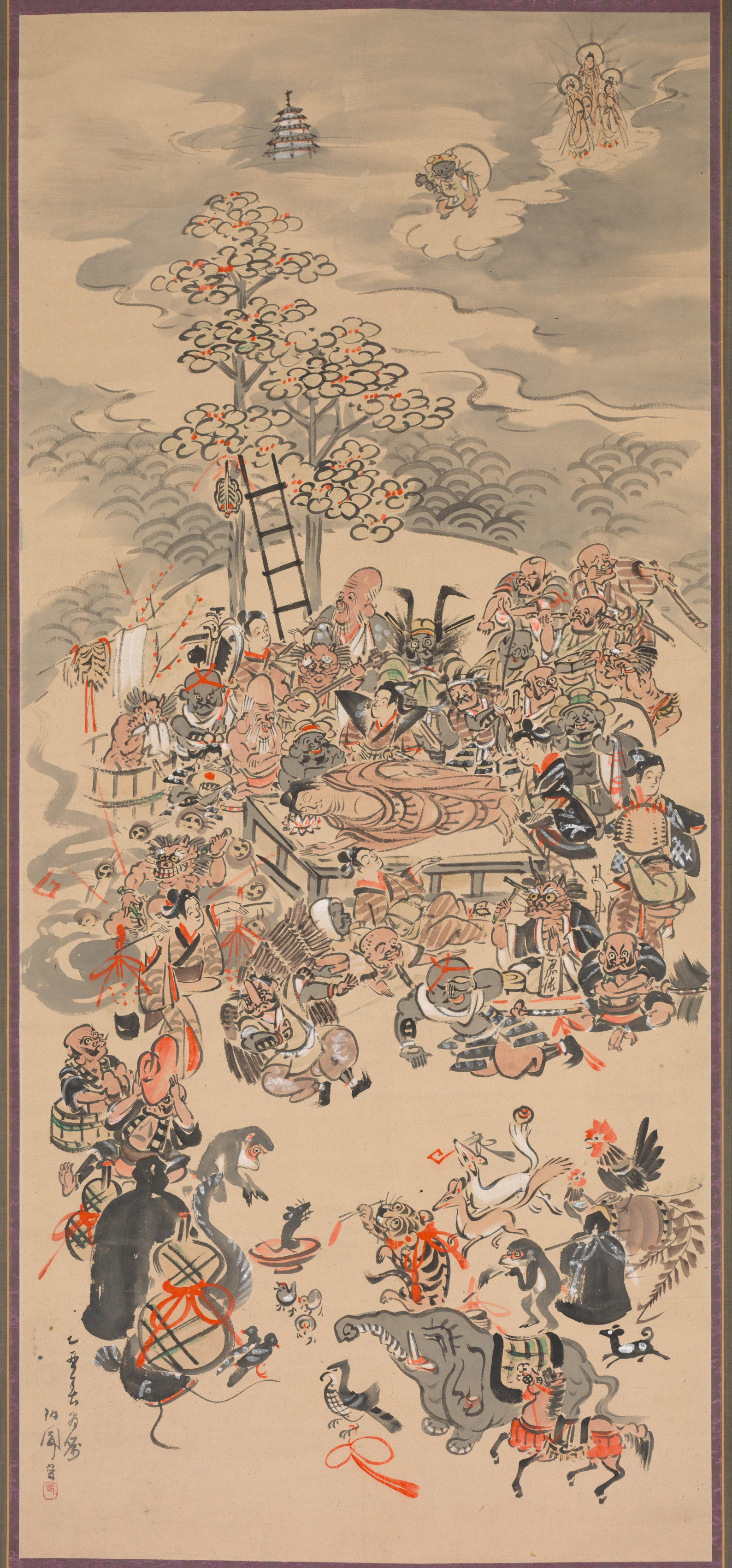The Cleveland Museum of Art
Collection Online as of May 9, 2024

Ōtsu-e Nirvana of the Buddha (Ōtsu-e Butsu Nehanzu)
1800s
(Japanese, active 1850–1870)
Overall: 201.9 x 78.7 cm (79 1/2 x 31 in.)
Location: not on view
Description
The painting parodies the traditional representation of this subject. The death of Buddha is actually the moment he achieves nirvana and escapes the endless cycle of death and rebirth. Hakuen transformed this serious moment (see The Death of the Buddha [1916.1141]) into a lively parody with otsu-e subjects. Mourners surround the Buddha. An oni, who pretends to be a priest, holds his gong in the air as he beats his drums and chants prayers. The wisteria maiden appears at the left, bringing water to the mourners. Behind her is an oni in the guise of a thunder god beating his drums. The animals along the foreground represent other otsu-e characters and models. The painting would have amused 19th-century viewers familiar with the usual Buddhist imagery.- ?-1954Mizuno, Otsu City, Japan1954–2016Dr. Daniel [1921–1996] and Mitzie Verne [1922–2016], Cleveland, OH, given to the Cleveland Museum of Art2016–The Cleveland Museum of Art, Cleveland, OH
- Main Asian Rotation (Gallery 236). The Cleveland Museum of Art, Cleveland, OH (July 21, 2014-January 13, 2015).Emperor Was My Neighbor: Japanese Folk Art from the Collection of Mitzie Verne. Morikami Museum,Delray Beach, FL (March 31-September 15, 2005).Visions of Japan: Prints and Paintings from Cleveland Collections. The Cleveland Museum of Art (organizer) (December 12, 2004-April 10, 2005).Mingei Museum of World Folk Art, San Diego, CA (June 1985).
- {{cite web|title=Ōtsu-e Nirvana of the Buddha (Ōtsu-e Butsu Nehanzu)|url=false|author=Hakuen|year=1800s|access-date=09 May 2024|publisher=Cleveland Museum of Art}}
Source URL:
https://www.clevelandart.org/art/2016.306